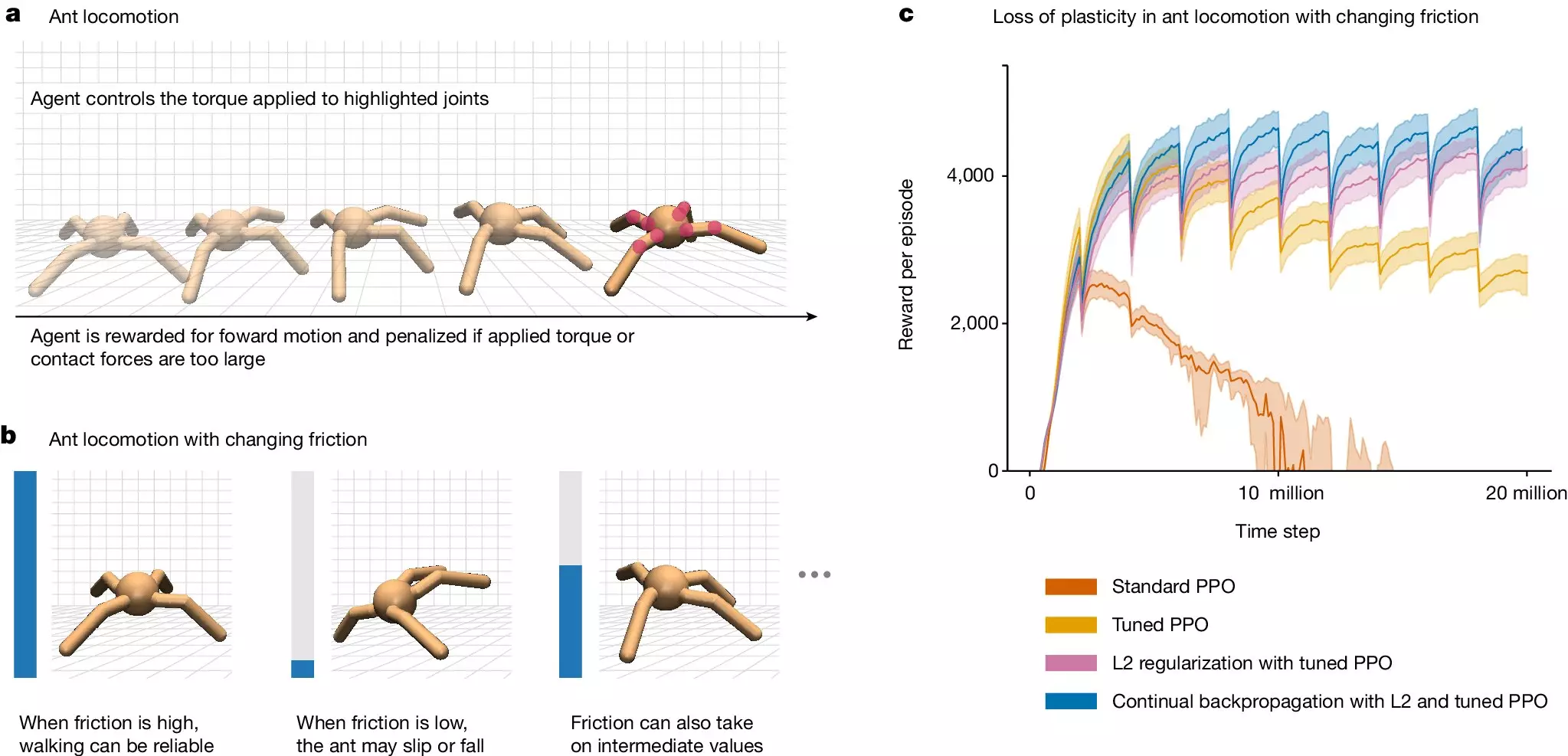The field of artificial intelligence is continuously evolving, with researchers at the Alberta Machine Intelligence Institute (Amii) making significant strides in understanding the challenges associated with deep learning models. In a recent study published in Nature, a team of researchers from Amii explored a vexing problem known as the “Loss of Plasticity in Deep Continual Learning.” This issue has long been suspected in deep learning models but has not received the attention it deserves until now.
The team of researchers discovered that many deep learning agents engaged in continual learning eventually lose the ability to learn and experience a drastic decline in performance. This phenomenon, termed “loss of plasticity,” poses a significant challenge in developing artificial intelligence that can effectively handle real-world complexities. Loss of plasticity not only prevents AI agents from learning new information but also inhibits them from relearning previously acquired knowledge. This problem limits the adaptability of AI systems, hindering their ability to function effectively in dynamic environments.
Challenges in Existing Models
Many existing deep learning models are not designed for continual learning. For instance, models like ChatGPT are trained for a specific period and then deployed without further learning. The process of merging new and old data into a model’s memory can be cumbersome and ineffective. In some cases, it is more efficient to erase the model’s memory and train it from scratch, which can be time-consuming and costly. In environments that require continual learning, such as financial markets, the inability of models to adapt poses a significant limitation.
The research team conducted experiments to investigate the prevalence of loss of plasticity in deep learning systems. By training networks in sequences of classification tasks, they demonstrated that the networks’ ability to differentiate decreased as they lost their capacity to learn. These findings highlighted the widespread nature of the problem and the urgent need to address it in deep learning models.
In response to the challenge of loss of plasticity, the research team proposed a novel method called “continual backpropagation.” Unlike traditional backpropagation, which initializes units only at the beginning of the learning process, continual backpropagation continually reinitializes units during learning. This approach involves identifying and reinitializing underperforming units, allowing models to continue learning for extended periods. The team’s research showed promising results, indicating that loss of plasticity is not an inherent issue in deep networks and can be overcome with innovative approaches.
The findings of this study shed light on the critical issue of loss of plasticity in deep learning models and the potential solutions to address it. By demonstrating that continual learning is achievable with modifications to existing algorithms, the research team has opened up new possibilities for advancing artificial intelligence. While continual backpropagation is a promising approach, further research and exploration of alternative solutions are warranted to fully overcome the challenges associated with loss of plasticity in deep learning networks. By bringing attention to this issue, the team hopes to spur further innovations in the field of artificial intelligence and pave the way for the development of advanced AI systems capable of continual learning.


Leave a Reply